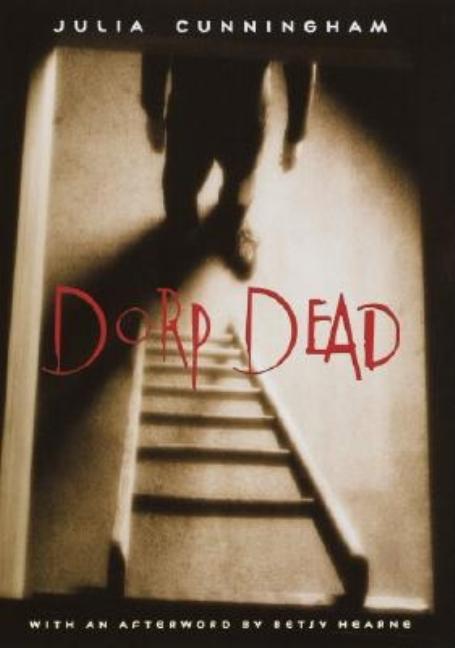Book Descriptions
for Dorp Dead by Julia Cunningham
From Cooperative Children's Book Center (CCBC)
This classic work of children’s literature is back in print along with an afterword written by Betsy Hearne that places it in historical perspective. Hearne notes that the publication of Dorp Dead in 1965 followed the selection of Where the Wild Things Are for the Caldecott Medal, and It’s Like This, Cat for the Newbery Medal, in 1964. In all three books, the myth of childhood as safe, cozy, and innocent was shattered. “None of these books revealed more clearly than Dorp Dead the child’s vulnerability to a sinister environment,” Hearne writes. The protagonist of the story, an eleven-year-old boy named Gilly Ground, is up against something terrible when he’s apprenticed to the ladder-maker, Mr. Kobalt. But Gilly doesn’t realize it at first. He’s thrilled to be out of the orphanage, thrilled to have his own room, thrilled he no longer has to interact with other children. The almost constant silence and unwavering routine demanded by Kobalt is a bit unsettling, but Gilly, who has always been a loner, seeks companionship in Kobalt’s old dog, Mash. It is only later that Gilly begins to realize that Mash, although he appears well-cared for, has been psychologically beaten down and abused. He is “absent from his skin.” Kobalt’s need to control everything in his environment, to make it bend to his will, will extend to Gilly. When Gilly discovers Kobalt has made a cage to hold him, just as he has one for Mash, he makes a daring and frightening escape in this chilling story that intends to disturb, to give voice to the powerlessness that children know and understand. Gilly’s ultimate triumph is hard-won, but with it comes his first real understanding of the importance of true companionship, of reaching out and meaningfully connecting with another living thing. There is a folkloric quality to the setting and elements of the story but a contemporary resonance as well. (Ages 10-13)
CCBC Choices 2003 . © Cooperative Children's Book Center, Univ. of Wisconsin - Madison, 2003. Used with permission.
From the Publisher
A reissue of the novel that dramatically changed children's literature in the 20th century.
Julia Cunningham's ground-breaking novel, first published in 1965 and unavailable in any edition for a decade, is reissued for a whole new generation of readers to call their own. " Here . . . is the story of a boy who discovers himself, who basically comes to grips with that most contemporary of problems, the isolation of the individual. It is told within the near-classic framework of the story of the orphan who survives and escapes maltreatment to find love, but it is told in frank, literate terms in the lingo of today's youngsters. And it has, as an additional dimension, a touch of the Gothic tale, a tinge of terror and a shade of romanticism." (The New York Herald Tribune)
Julia Cunningham's ground-breaking novel, first published in 1965 and unavailable in any edition for a decade, is reissued for a whole new generation of readers to call their own. " Here . . . is the story of a boy who discovers himself, who basically comes to grips with that most contemporary of problems, the isolation of the individual. It is told within the near-classic framework of the story of the orphan who survives and escapes maltreatment to find love, but it is told in frank, literate terms in the lingo of today's youngsters. And it has, as an additional dimension, a touch of the Gothic tale, a tinge of terror and a shade of romanticism." (The New York Herald Tribune)
"From the Hardcover edition."
Publisher description retrieved from Google Books.


